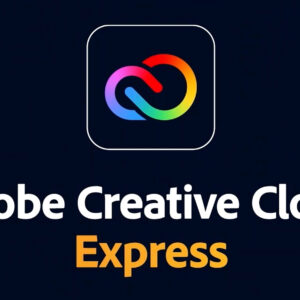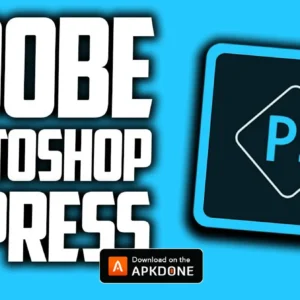FilmPack
Rediscover the magic of analog in the age of digital
DxO FilmPack traces the history of analog photography through 84 high-fidelity film renderings
DxO FilmPack 6 brings analog looks to the digital era with filters and effects we’re sure will be a big hit with young photographers looking for easy ways to improve their images for ‘the gram’. More seasoned photographers will also find the ease at which great black and white images can be created and for the first time, X-series Fujifilm cameras are supported which will be a welcomed addition for Fujifilm shooters.
DxO FilmPack 6 Features

DxO FilmPack 6 is a film simulator that makes it easy for photographers of all levels to browse, select and apply any of the 214 presets that are available to your own photos.
With FilmPack 6 you get the addition of new films, effects, light leaks and frames which can all be used to bring a bit of nostalgia to your photos and celebrate the perfect imperfections of film. To enhance images even further, a new colour rendering engine based on eight channels, rather than the six channels used in previous versions, is built-in so users have more precise control over colour. Users can also select their own hue in the highlights and shadows of their images, combine colours, and create split toning effects.
As well as a wide array of new effects, DxO has also added a new feature called ‘Time Machine’ which is, basically, an interactive introduction to the history of film photography.
DxO FilmPack 6 Key Features:
- 84 analog film looks available
- 214 presets in total
- New films, effects, light leaks and frames
- ‘Time Machine’ feature
- New colour rendering engine
- Improved image control (highlights/shadows and split toning)
- Fujifilm X-Trans camera support
DxO FilmPack 6 Handling & Performance

Installing and start-up is quick and easy to do as is selecting an image to work on once the software is open. We’re using DxO FilmPack 6 as a standalone product built it does work as a plug-in with DxO PhotoLab 5 and Adobe Photoshop, too.
The user interface of DxO FilmPack 6 is basic but you don’t really need that many buttons and tools as the software does the hard work for you. Across the top are options for saving, comparing before/after shots, zoom tools, a quick way for browsing through your images and a few modifying tools should you want to crop or rotate an image. There are also tools for adjusting the film rendering you apply to your shot which includes adding grain, developing tools such as adjusting exposure, lens effects such as adding a vignette and graphical effects so you can add frames, textures and light leaks. You can also view a histogram should you need to.
The presets are displayed on the righthand side with live previews of how each effect will change the look/feel of your image. 214 presets are now available in FilmPack 6 which includes analog film presets long with more modern film looks and even cinematic effects. You can browse all of the presets in one long list or use the filter tab to select specific film types/looks you want to preview. You can also add presets to your favourites list or create custom presets by using the built-in presets as a base or you can use the adjustment tools to create a brand-new preset designed by you. Should you need them, search and sort filters are available when browsing presets, too.
15 new renderings have been introduced which includes the famous EKTACHROME Professional Infrared EIR Color Slide Film from KODAK and the monochrome instant film for the Polaroid 600 camera, IMPOSSIBLE PX 600 SILVER SHADE. Plus, 20 new effects are available along with 15 new light leak effects and 15 new frames.
Fujifilm camera owners will also be happy to hear that their cameras are now supported (X-Trans RAW files) but like with PhotoLab 5, this feature is currently in ‘beta’.
A new feature you’ll find under presets is ‘Time Machine’ which gives users a detailed look at the history of film while organising presets into decades/years. For example, there are 27 films found under the category of 1990-1994 and when you click on one, a description of the film appears on the lefthand side. When you don’t have a specific film selected, facts from that time period are shared instead with the release of the Sony Playstation appearing on the timeline for the 1990-1994 films. You’ll also see iconic images and famous figures in photography pop up along the way.
DxO collaborated with the Friends of the French Museum of Photography in Bièvres to bring this feature to life and even though it doesn’t really add anything to the creative process, it’s a fun feature that will feed you with facts you can use to impress your friends with.
Adding a preset to an image couldn’t be easier as you simply have to click on a preset and it’ll appear on your photo. Of course, not all presets will suit every photo but the previews do help with this as you can see how a particular preset will look before applying it. We weren’t fans of every preset but the world would be a boring place if we all liked the same things and there are so many presets built-in, there will be something for everyone. Plus, you can adjust the presets that are applied with the development tools so you can make a look that’s just right for you. This is also an area DxO has worked on as FilmPack 6 now offers 8 channels for hue, saturation and lightest adjustments instead of the previous 6 so colour adjustments, as well as split toning and the adjustment of highlights/shadows, is more improved.
We’re not massive fans of the built-in frames you can use on your photos but the light leaks can look good when used correctly. Once happy, you can save your image as a JPEG or TIFF.
We like how easy DxO FilmPack 6 is to use and can see it as a tool photographers of all levels will find useful but it’s the younger generation who have been brought up on filters and Instagram we can see really liking the software (if you can pull them away from their smartphones for long enough that is). Plus, it’s a simple introduction to photo editing for people who may want to learn more about it without complicated tools and options confusing them.
You can, of course, find filters and presets in other photo editing software but the list available probably won’t be as comprehensive as what’s on offer in PhotoLab 6.
DxO FilmPack 6 Sample Photos

+ Pros
- Easy to use
- Quick to apply presets
- 84 analog film looks available
- 214 presets in total
- No subscription
- Great value
– Cons
- Some may find it too basic
Value For Money
DxO FilmPack 6 (PC and Mac) is available now from the DxO online store at the following introductory prices until 14 November 2021:
- DxO FilmPack 6 ESSENTIAL Edition: £48.99 instead of £75.
- DxO FilmPack 6 ELITE Edition: £99.99 instead of £129.
This is a one-off price so there’s no subscription and when compared with similar software that’s currently available, the price is about on-par. Alternatives would be Nik Collection (also by DxO) priced at around £135 (£89.99 while on offer), Exposure X7 priced at $149 and ON1 Photo RAW priced at around £90. You could also try Snapseed which is free but it’s only available as a smartphone app.
















